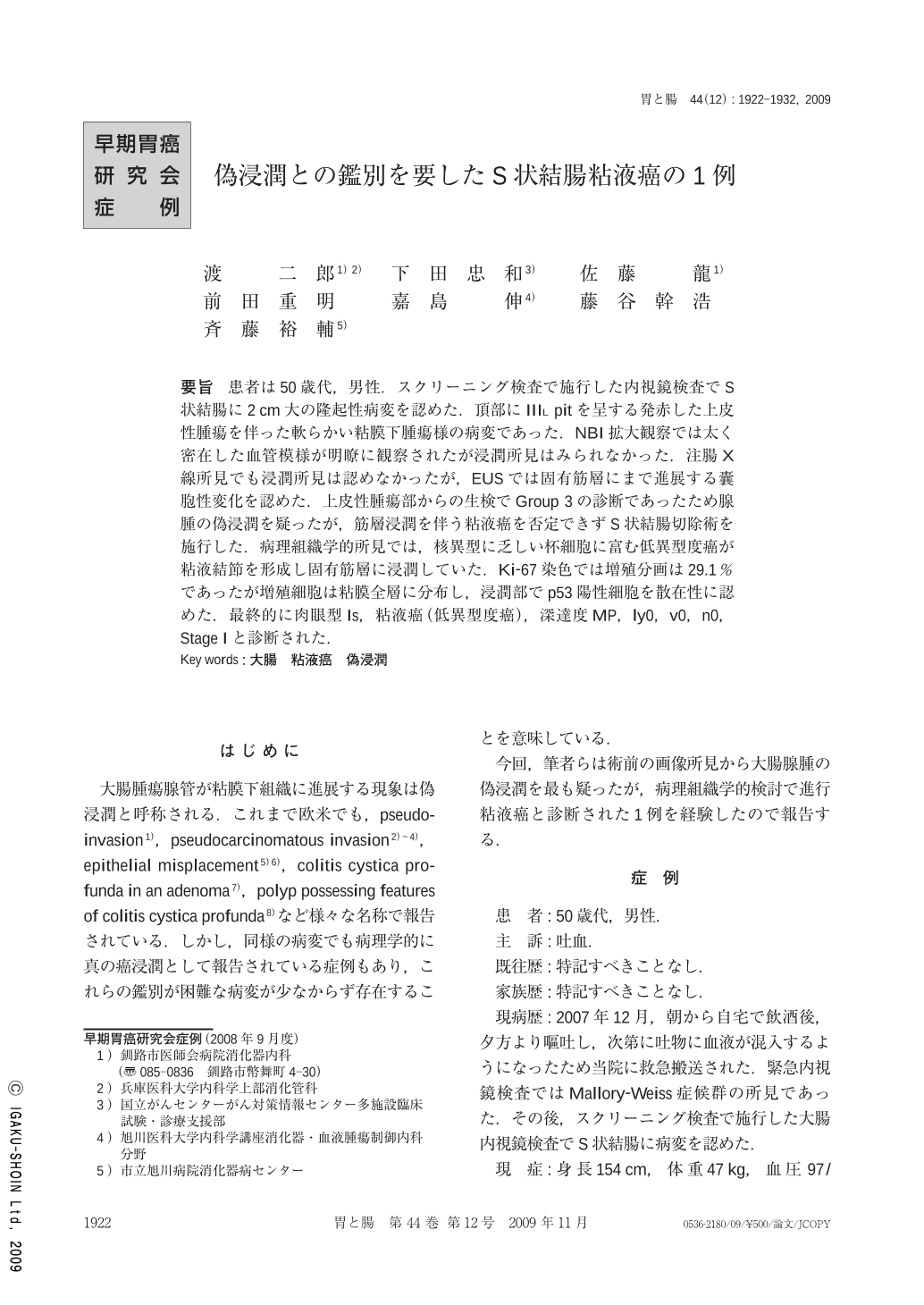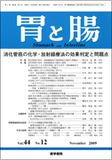Japanese
English
- 有料閲覧
- Abstract 文献概要
- 1ページ目 Look Inside
- 参考文献 Reference
要旨 患者は50歳代,男性.スクリーニング検査で施行した内視鏡検査でS状結腸に2cm大の隆起性病変を認めた.頂部にIIIL pitを呈する発赤した上皮性腫瘍を伴った軟らかい粘膜下腫瘍様の病変であった.NBI拡大観察では太く密在した血管模様が明瞭に観察されたが浸潤所見はみられなかった.注腸X線所見でも浸潤所見は認めなかったが,EUSでは固有筋層にまで進展する囊胞性変化を認めた.上皮性腫瘍部からの生検でGroup 3の診断であったため腺腫の偽浸潤を疑ったが,筋層浸潤を伴う粘液癌を否定できずS状結腸切除術を施行した.病理組織学的所見では,核異型に乏しい杯細胞に富む低異型度癌が粘液結節を形成し固有筋層に浸潤していた.Ki-67染色では増殖分画は29.1%であったが増殖細胞は粘膜全層に分布し,浸潤部でp53陽性細胞を散在性に認めた.最終的に肉眼型Is,粘液癌(低異型度癌),深達度MP,ly0,v0,n0,Stage Iと診断された.
A male in his 50's underwent colonoscopy for screening purposes. A polypoid lesion mimicking a submucosal tumor was identified in the sigmoid colon. The tumor was soft and presented a neoplastic lesion with IIIL pit pattern at the top of the lesion. Magnified narrow band imaging showed a clear, thick and dense vascular pattern on the surface, but did not reveal any invasive findings. Barium enema also showed no invasive findings, whereas inavasion into the proper muscle layer as a cystic mass was identified by endoscopic ultrasonography. We diagnosed this lesion as an adenoma with pseudoinvasion because the biopsy specimen obtained from the neoplastic lesion on the top of the lesion was judged histologically to be a low grade adenoma. We could not deny that a mucinous adenocarcinoma may have infiltrated into the proper muscle layer, so we performed a sigmoidectomy. Histology revealed that atypical cells with low nuclear atypicality formed the mucinous component invading the muscularis propria. Although Ki-67 labeling index was 29.1%, which is similar to that of adenoma, the positive cells were distributed throughout all the neoplastic glands of the mucosa without a preferential distribution as found in adenoma. p53 positive cells were also scattered throughout the invaded area. From the above, the lesion was histologically diagnosed as a mucinous adenocarcinoma composed of low grade adenocarcinoma of goblet cell type, with invasion into the muscularis propria. There was no evidence of lymphatic/venous infiltration or lymph node metastasis.

Copyright © 2009, Igaku-Shoin Ltd. All rights reserved.


